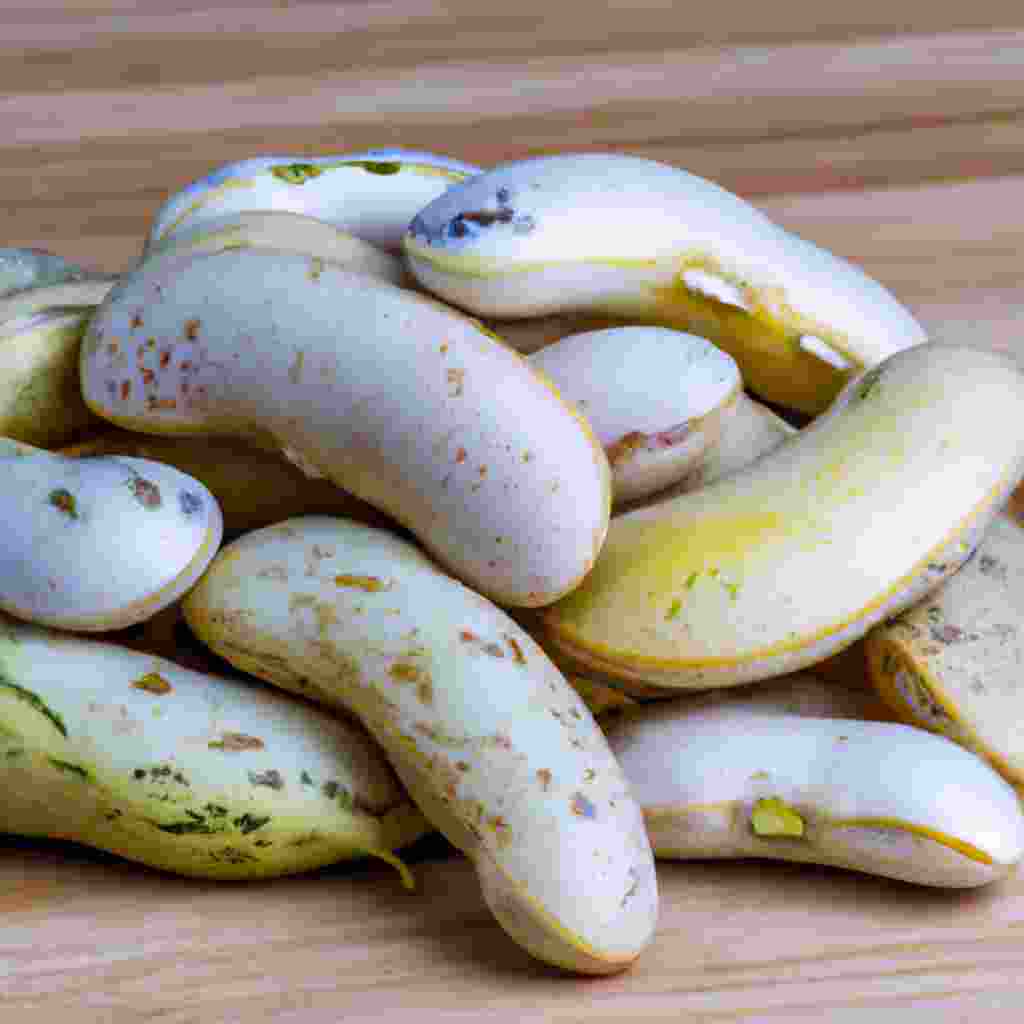Potato Bean
Potato beans, scientifically known as Apios americana, are a unique and versatile tuber that has been a significant part of North American indigenous diets for centuries. Despite their name, potato beans are not true beans but rather tuberous roots that grow on a perennial vine native to North America. These tubers are rich in nutrients and have played a crucial role in the culinary and cultural history of the region. The potato bean plant is a member of the legume family, and its vines can reach impressive lengths as they climb and twine through various landscapes. The tubers themselves are small, elongated, and have a rough, brown exterior. The flesh inside is starchy and sweet, offering a flavor profile that is a delightful combination of potatoes and sweet potatoes. This unique taste has made potato beans a sought-after ingredient in traditional and modern cuisines alike. Historically, indigenous peoples in North America recognized the nutritional value of potato beans and incorporated them into their diets. The tubers provided a reliable source of carbohydrates, fiber, and essential vitamins. Native American tribes cultivated and foraged for potato beans, utilizing them in various culinary preparations. The tubers were often roasted, boiled, or ground into flour for baking. Additionally, they were sometimes combined with other seasonal ingredients, such as wild game or foraged vegetables, creating diverse and flavorful dishes. In contemporary times, there has been a resurgence of interest in traditional and native foods, including potato beans. Agricultural enthusiasts and chefs alike have embraced these tubers for their unique taste and nutritional benefits. Efforts have been made to cultivate and promote the growth of potato beans, both for their historical significance and their potential as a sustainable and nutritious food source. Beyond their culinary uses, potato beans also hold cultural significance for many indigenous communities. They are symbolic of the deep connection between people and the land, representing a link to traditional practices and the importance of preserving native foodways. As interest in native and traditional foods continues to grow, potato beans serve as a reminder of the rich culinary heritage of North America.
About Preparation and Cooking
Preparing and cooking potato beans involves various approaches that highlight their unique flavor and texture. One common method is roasting, where the tubers are seasoned with herbs, spices, and oil before being roasted to enhance their natural sweetness. Boiling is another straightforward method, preserving the tubers' original taste and allowing for easy incorporation into various dishes. Mashing potato beans is a versatile approach, creating a creamy consistency that can be seasoned and served as a side dish or base for other recipes. Alternatively, they can be sliced and pan-fried to achieve a crispy texture, adding a delightful crunch to salads or as a standalone snack. Baking or grilling potato beans adds a smoky flavor, perfect for enhancing their earthy undertones. Incorporating potato beans into stews, soups, or casseroles allows them to absorb the flavors of the dish while contributing their unique taste. Grinding them into flour opens up possibilities for baking, adding a nutritious twist to bread, pancakes, or other baked goods. The versatility of potato beans in various cooking methods makes them a dynamic ingredient, appealing to culinary enthusiasts seeking to explore diverse and creative approaches in the kitchen.

Details about Potato Bean
The potato bean plant is a member of the legume family and is characterized by its twining vines that can reach impressive lengths. These vines climb and wind through various landscapes, creating a distinctive and visually appealing presence. The tubers themselves are small, elongated, and possess a rough, brown exterior. The interior flesh is starchy and sweet, offering a flavor profile that is a delightful combination of potatoes and sweet potatoes.
Potato beans have deep roots in the history of North American indigenous peoples. Native to the region, these tubers have been a significant part of indigenous diets for centuries. The tubers were not only a source of sustenance but also played a crucial role in the cultural practices and traditions of various tribes. Indigenous communities recognized the nutritional value of potato beans and incorporated them into their daily meals. The tubers provided a reliable source of carbohydrates, fiber, and essential vitamins.
Cultivation and foraging practices varied among different Native American tribes. Some communities cultivated potato beans in agricultural settings, while others foraged for them in the wild. The tubers were harvested and used in various culinary preparations, reflecting the diverse and region-specific foodways of indigenous peoples.
In traditional culinary practices, potato beans were prepared in a variety of ways. They were often roasted, boiled, or ground into flour for baking. The versatility of these tubers allowed them to be integrated into a wide range of dishes, from stews to bread. Indigenous cooks combined potato beans with other seasonal ingredients, such as wild game, fish, or foraged vegetables, creating flavorful and nutritionally balanced meals.
The unique taste of potato beans, a harmonious blend of potatoes and sweet potatoes, made them a sought-after ingredient. Their ability to enhance the flavor profile of dishes contributed to their popularity in indigenous cuisines. As culinary practices evolved over time, potato beans became a staple ingredient in many traditional recipes, showcasing the deep connection between the people and the land.
From a nutritional standpoint, potato beans offer a substantial array of benefits. As a starchy tuber, they are a good source of carbohydrates, providing a sustainable energy source. Additionally, they contain dietary fiber, promoting digestive health. The tubers also boast essential vitamins and minerals, contributing to a well-rounded and nutritious diet.
While the specific nutritional composition can vary based on factors such as soil quality and growing conditions, potato beans are generally recognized for their role in providing essential nutrients to those who include them in their diets. This nutritional richness adds to the appeal of potato beans as a wholesome and sustainable food source.